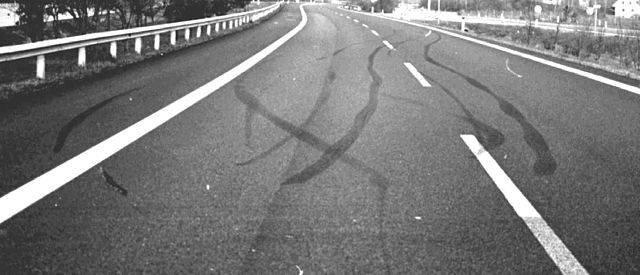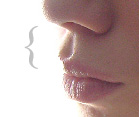We just learned about the
Forensic Podiatry.
Another part of forensic science is
Tire Skid Marks.
These are the marks left on roads from tires.
Sometimes cars can leave these marks if they are going really fast, taking a sharp turn, stopping very fast, or if there is an accident.
The marks on the road usually look like one of three kinds:
- acceleration marks: These are when someone goes from slow to really fast and the tires are just spinning.
- braking marks: These are when someone hits the brakes and their tires lock up and slide.
- yaw marks: If the car slides sideways either on a turn or because they hit something.
When there is a car accident, the police can look at the skid marks to figure out how the crash happened.

(from: wikipedia -
skid mark)
Kid Facts - Blast from the past: Gimbaled Thrust






